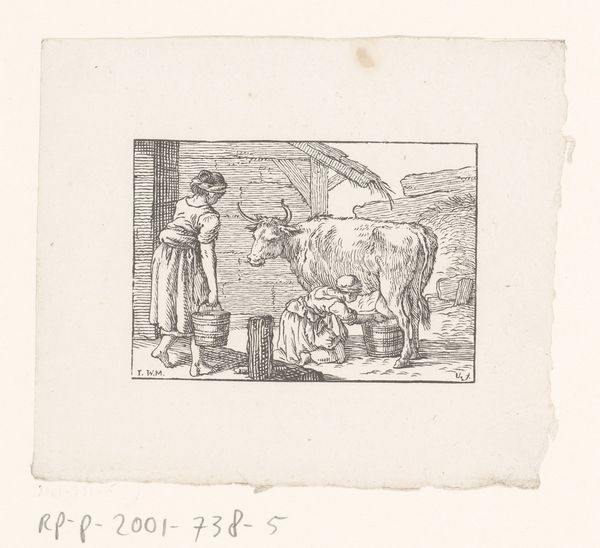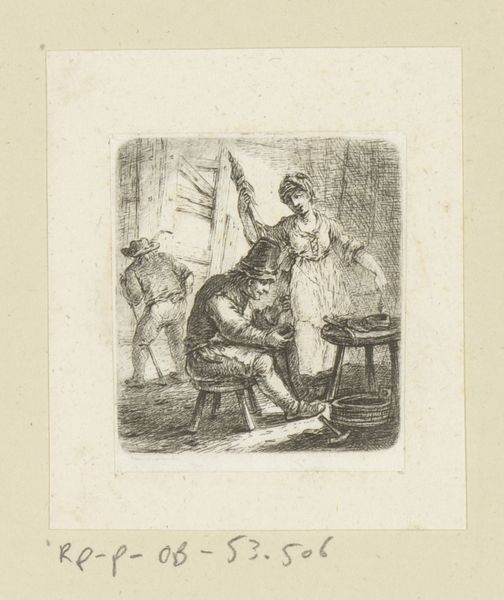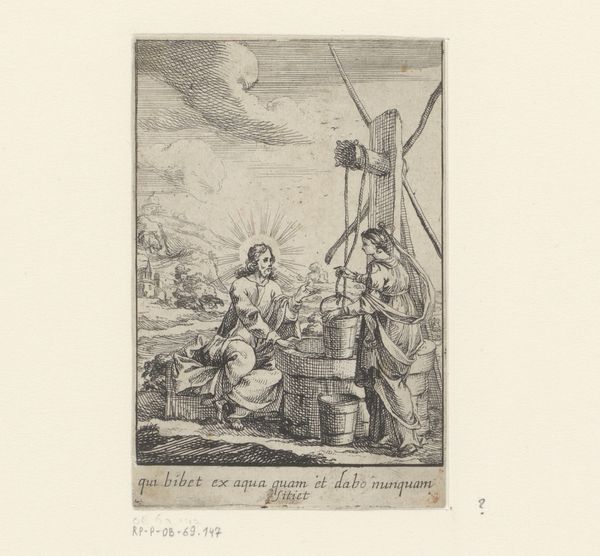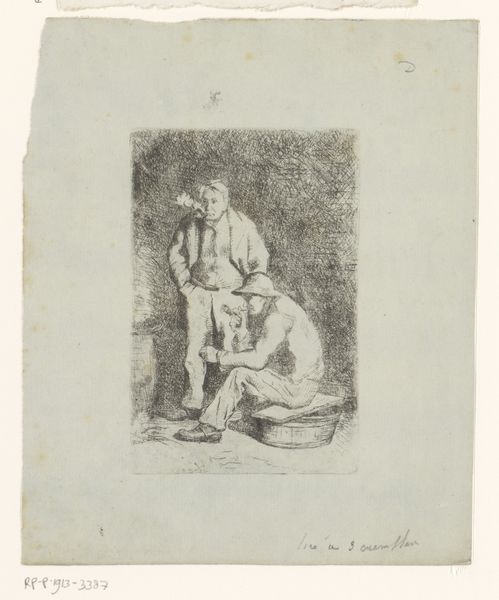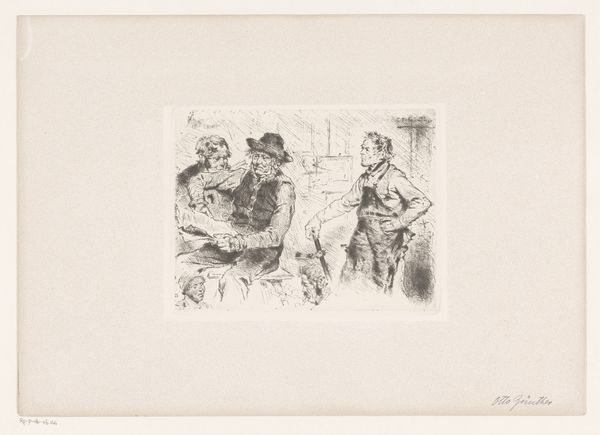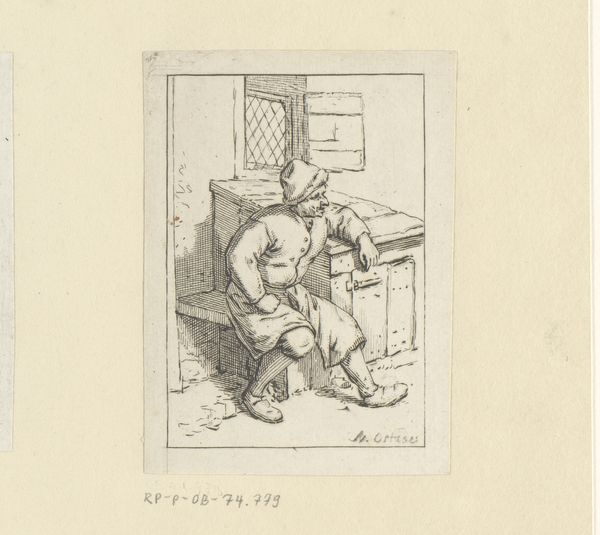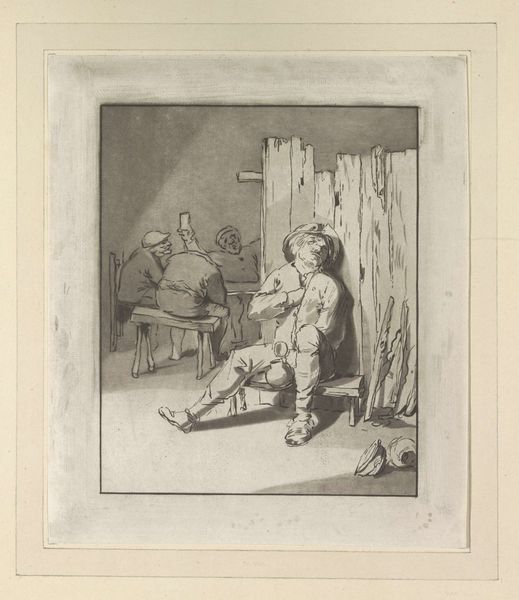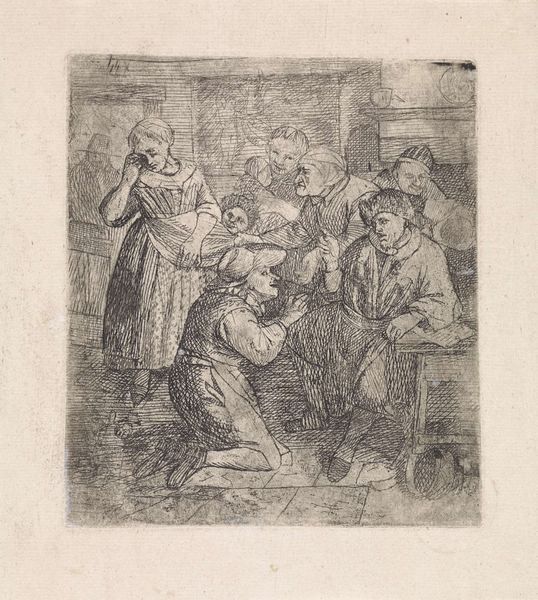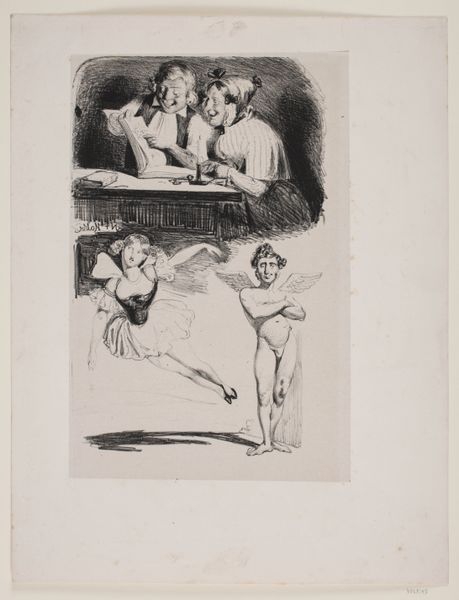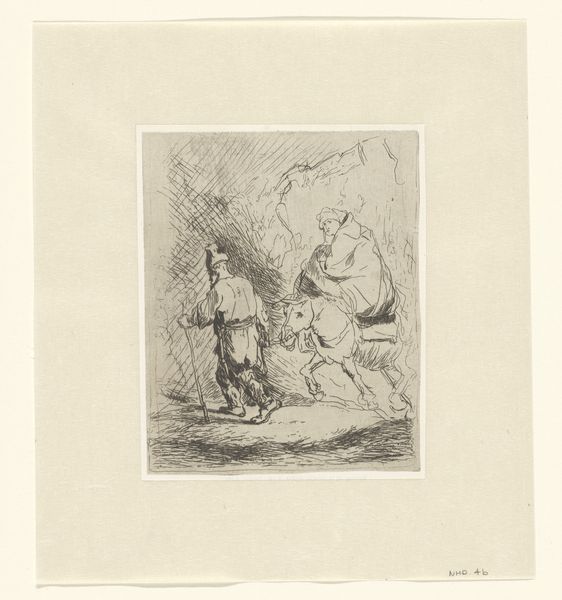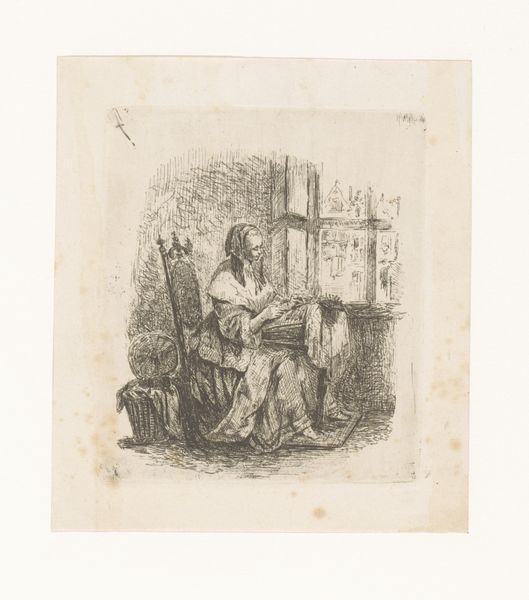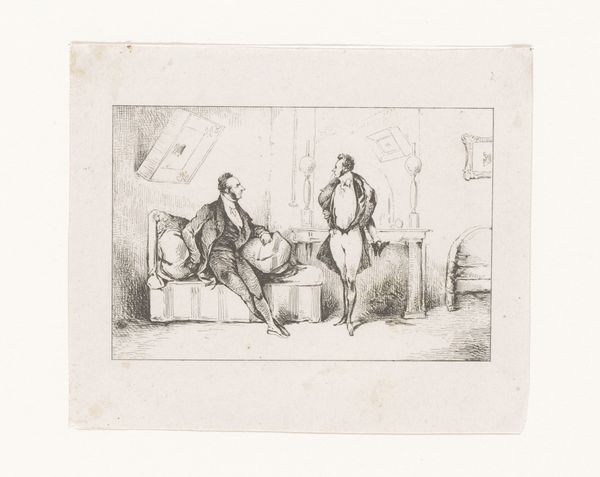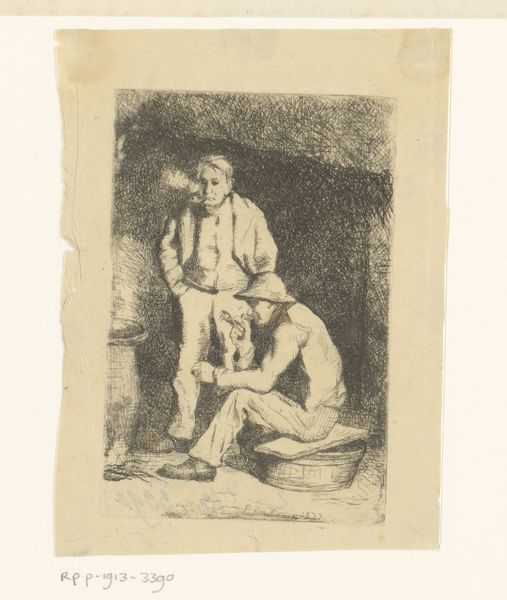
drawing, print, etching
#
drawing
#
ink drawing
# print
#
etching
#
old engraving style
#
etching
#
figuration
#
genre-painting
Dimensions: height 70 mm, width 66 mm
Copyright: Rijks Museum: Open Domain
Curator: Here we have Charles Jacque’s “Three Figures at a Table,” an etching made in 1844. Editor: My immediate impression is of shadows and quiet storytelling. There's a real sense of intimacy in this modest scene. It’s dark, almost like witnessing a clandestine gathering. Curator: Indeed. Jacque captures a very human scene of perhaps weary travelers, congregating in some in or tavern. Consider how the figures around the table embody universal experiences – camaraderie, relaxation, perhaps even contemplation. Note the use of the vessel for drink, a potent and almost timeless symbol for friendship. Editor: Right, the vessel. And thinking materially, etching allows for incredible detail. Look at the way the lines define the figures' clothes and the rough wood of the table and the stool the figure is sitting on. The physical act of etching, with acid eating away at the plate, mirrors, perhaps, the slow attrition of daily life. The starkness of the black ink, a consumable material of the time, only emphasizes that attrition. Curator: A fascinating interpretation. Also consider how prints facilitated wider social dissemination. Here Jacque, using line and form, speaks volumes of their social life. And perhaps not just a neutral reportage; the rough clothing, and relaxed pose hint at deeper social relationships. The artist chooses this fleeting scene, these subjects to depict for eternity. Editor: Yet etching too is relatively fast. A faster reproduction allowed the work to spread, consumed quicker. It’s interesting to consider the parallels between Jacque’s method and the momentary scene he captures. It implies it's a rapidly changing, and ultimately a consumable experience. Curator: So, in viewing this small print, it may lead one to think of universal symbolic implications while simultaneously observing a moment of creation. Editor: Agreed. Ultimately, "Three Figures at a Table" speaks volumes about social interactions, the fleeting nature of life and what survives. It offers us an intimate, but reproduced look, at human experience, from labor to legacy.
Comments
No comments
Be the first to comment and join the conversation on the ultimate creative platform.
